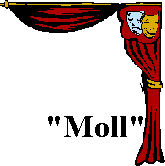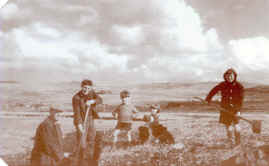UFO's over Kerry
The Kerryman Thursday, Donal O'Reilly April 19,
2001
Mystery in the sky deepens with eerie night-time
sightings in Scartaglen
The mystery in the skies above Kerry deepened this
week with news of yet another strange occurrence, this time originating
in the Scartaglen area.
On this occasion, a man who witnessed something very peculiar admitted
to The Kerryman that he was utterly terrified by his eerie experience
and was glad to be surrounded by the familiar lights of his home village
throughout.
It all started in the early hours on a Friday morning, about two weeks
after the incident
from The Spa reported in last weeks edition of The Kerryman, as the
man,
who stressed that he has been a Pioneer for over 25 years, was walking
towards a friend's house. "I had been at home with my wife and
children, but after everyone went to bed I decided that I would call
over and visit a friend of mine who lives in the village," the
witness, who did not wish to give his name, explained. "Anyway, I
was heading towards his house when I suddenly saw something which I can
only describe as a huge ball of light perhaps about a mile away in the
direction of Ballydesmond. "I would have guessed that it was no
more than about 40 or 50 feet off the ground. "The way I would
describe it is that the edges looked as if they were sizzling, they
weren't smooth or constant."At first, the man admits that he
thought it was a helicopter until he realised that it was far too large
and entirely the wrong shape. Also on what was an extremely still, clear
night, there was not a sound to be heard from the object whatever it
was.
For about a minute the witness looked at the light with a mixture of awe
and fear until events became more unlikely. "All of a sudden it
dimmed down although I still could not make out the shape of any object.
Then it began to move off quite slowly, but what was even weirder was
that as it moved off there were blue, green and yellow lights at it's
rear rotating and flashing on and off in sequence. I watched it until it
disappeared from view and then went to my sisters house and told her
what I had just seen.
To be honest I don't know what it was, I am a pretty logical guy and I
don't really
believe in UFO's, but the fact is that it was not a plane or anything
like that, it was
something strange and like nothing I had ever seen before. I certainly
can't begin to
describe what it was.
To be honest I am glad that I was surrounded by the lights of the
village because it
made me feel a bit safer. I certainly would not have wanted to see it
when I was
standing in the middle of a dark road.. After talking about an
experience which he
describes as unusual and eerie the man heard that three other people
from Scartaglen ,
a taxi driver and his two passengers ,also reported seeing something
unusual in the sky that same night . "I have talked about it , and
people have sort of said " oh yeah", but have not disbelieved
me because anyone who knows me will realise that I am not that
kind of person , he said ."It was all very bizarre".
Meanwhile, Colin Stapleton , the independent film maker commissioned by
RTE to make a documentary about the UFO phenomenon, confirmed that he
has received a number of calls from Kerry area in the light of last
week's story in The Kerryman, and, in fact, spent the weekend
interviewing and filming eye-witnesses in the county.










